
The Krawl: Rule Book

Contents
Introduction
Your Dungeon Master weaves the tale while you forge your legend. The Krawl is an open-world, endless RPG that captures the spirit of classic pen-and-paper adventures. Create heroes defined by race, class, and ever-evolving abilities as you delve into perilous castles, ancient dungeons, forgotten crypts, crumbling ruins, and sprawling kingdoms.
Every action—combat strikes, skill attempts, magical incantations—resolves with a single d20 roll, keeping gameplay swift and decisive. The world is yours to explore, and your choices will shape the story.

Characters

Abilities
All characters have six abilities. Ability scores are integers (e.g., -3, -2, -1, 0, +1, +2, +3, …) with no max or min; 0 is an average human, with every point roughly equal to a 10% change. For example + 10 would be 100% better than the average human.
Scores act as modifiers to combat, skill checks, and saving throws.
- Strength (STR): Modifies melee attack's chance to hit H, and damage D.
- Dexterity (DEX): Modifies ranged/thrown attack's chance to hit H, Armor chance to be hit, and initiative rolls.
- Constitution (CON): Modifies hit points gained per level.
- Intelligence (INT): Modifies Mage spell potency.
- Wisdom (WIS): Modifies Cleric spell potency.
- Charisma (CHA): Modifies social interactions.
Races

Starting player races include Human, Elf, Dwarf and Orc. Baseline value for all stats is 0 - representing the average human. Starting stat adjustments for player races are as follows:
| Race | STR | INT | WIS | DEX | CON | CHA | Racial Traits |
|---|---|---|---|---|---|---|---|
| Human | 0 | 0 | 0 | 0 | 0 | 0 | None |
| Elf | -1 | +1 | 0 | +1 | -1 | 0 | Heightened sense of Hearing |
| Dwarf | +1 | 0 | 0 | -1 | +1 | -1 | Low-Light Vision |
| Orc | +2 | -1 | -1 | 0 | +1 | -1 | Heightened sense of Smell |
Classes
Each class offers a combinations ability bonuses, special abilities, and weapon restrictions.
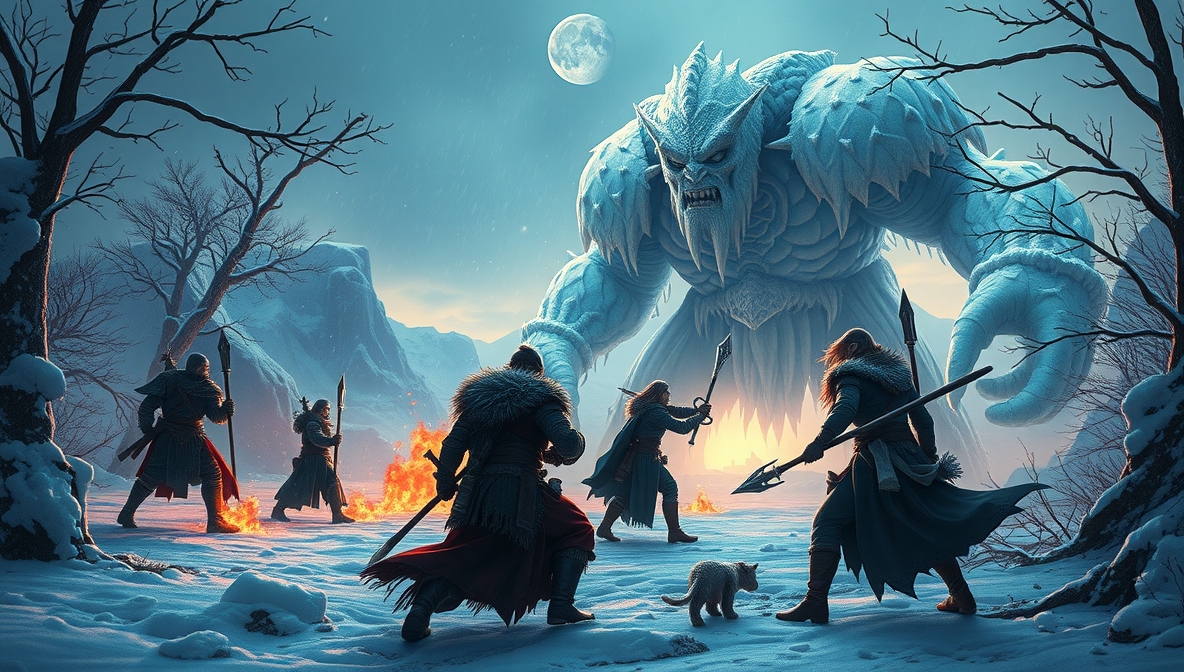
Fighter
Ability Bonus: +1 STR
Special: +1 to all weapon damage rolls
Armor: Any
Weapons: Any
Minimum HP/Level: 10
Cleric
Ability Bonus: +1 WIS
Special: Prayerbook of learned spells
Special: Banish Undead (d20 + WIS + Level vs. undead modifiers, flees if higher or equal level, destroyed if lower level)
Armor: Any
Weapons: Blunt only (mace, hammer, staff, sling)
Minimum HP/Level: 7
Thief
Ability Bonus: +1 DEX
Special: Sneak Attack (bonus Level modifier to H and D from surprise/hidden)
Special: +2 lock picking, disarming traps, stealth modifier
Armor: Light, Medium
Weapons: Missile and one-handed melee (sword, dagger, club, sling, bow, crossbow)
Minimum HP/Level: 6
Mage
Ability Bonus: +1 INT
Special: Spellbook of learned spells
Armor: Light
Weapons: Dagger, staff, sling, bow
Minimum HP/Level: 5
Equipping incompatible armor or weapons for your class enforces a an >Attack and Defense penalty = -1H/-1D * Level * # of incompatible equipped items.
Hit Points

HP gained per level: Roll d20 + CON modifier. If roll is less than the minimum HP gained/Level for their class, the character gains the minimum HP.
Natural Healing: Roll d20 + CON modifier per rest (8 hours minimum).
Alignments
You can choose to be Lawful, Neutral, or Chaotic.
Your alignment affects your interactions with other characters and the world. If you perform actions that are not aligned with your alignment, you may be punished by the gods or other characters.
You cannot change your alignment except through extraordinary means.
Languages
Almost every civilized race and intelligent creature speaks the Common Tongue. Although some rare beast and monstrocities may not, for those you will need to learn their language.
Leveling
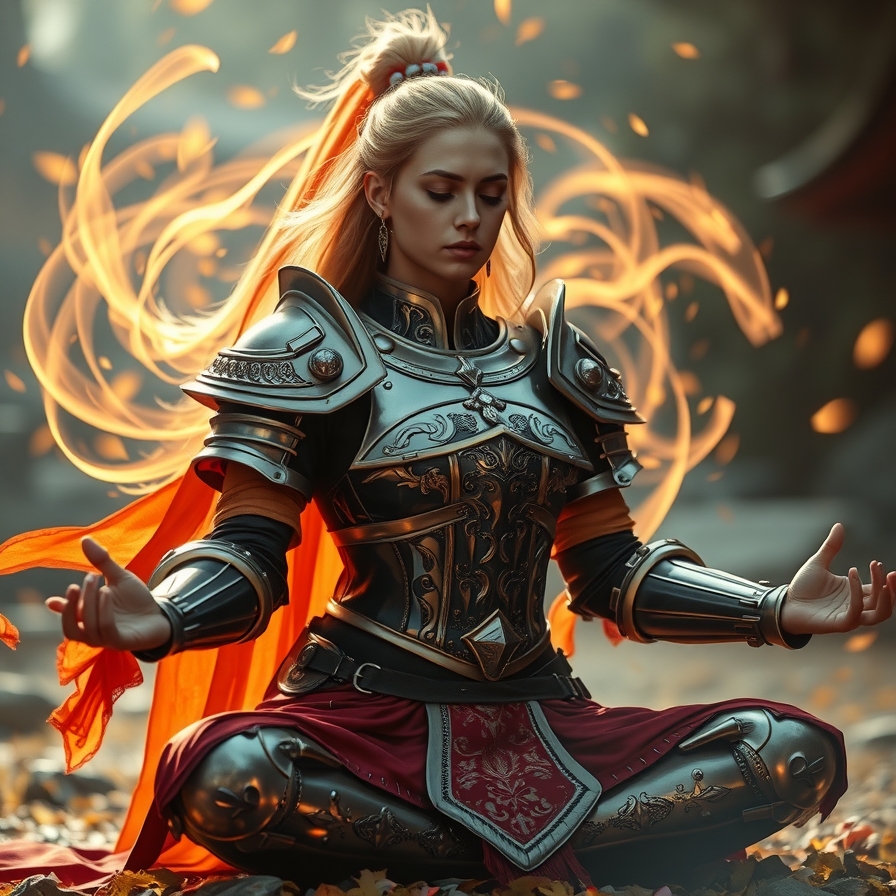
Experience (XP) Requirements
Level 2: 2,000 XP
Level 3: 5,000 XP
Level 4: 12,500 XP
Each level thereafter: 2.5x more XP than the previous level
XP Rewards
Killing enemies: 100 XP (per level above your level) + 100 XP
Note: No XP for killing enemies less than your level
Treasure: 1 XP per value of gp
Benefits per Level
Ability increase: +1 to any ability (no max/min)
Hit Points: d20 + CON modifier
Skill Checks & Saving Throws
Any action requiring skill or resisting effects uses a d20 + relevant ability modifier + equipment modifiers + Level vs. DM-set Difficulty Level (includes factors like complexity, fatigue, environment, weather, previous attempts, etc.):
Difficulty Levels (Guideline only - DM may set higher or lower)
- 5 = easy
- 10 = normal
- 15 = hard
Natural 20 = auto-success (often with extra benefit). Natural 1 = auto-failure (often with narrative complication).

Repeating failed skill checks become more difficult unless circumstances affecting the attempt have changed.
If skill checks involve NPCs, the DM may roll opposing checks for each to counter to the player's action.
Examples: STR = lift gates, break walls; DEX = dodge traps, balance; CON = resist poison; INT = magic resistance; WIS = lore; CHA = persuade/intimidate.
Weapons & Armor Explained (H/D)
Weapons and armor play an important role in determining the chance to hit/being hit and the damage dealt/taken. A single D20 roll determines both if the attack hits and the damage taken.
Attacks have a base difficulty of 10 (10 or better required to hit).
- Roll required to hit = 10 + Defender's (H) modifiers - Attacker's (H) modifiers.
- Damage taken = Roll from hit result - Roll required to hit + Attacker's (D) modifiers - Defender's (D) modifiers.
Weapons H/D
- Hit Modifier (H): Added to the attackers roll to hit.
- Damage Modifier (D): Added to the attacker's damage total
Armor H/D
- Hit Modifier (H): Subtracted from the attacker's roll to hit.
- Damage Modifier (D): Subtracted from the attacker's damage total.
Weapons
Weapons provides two stats:
- Hit Modifier (H): affects chance to hit.
- Damage Modifier (D): affects damage dealt.
| Weapon | Hit (H) | Damage (D) | 2 Handed |
|---|---|---|---|
| Arrow | +3 | 0 | No |
| Dagger | +1 | +1 | No |
| Staff | +3 | 0 | Yes |
| Long Sword | +2 | +2 | Yes |
| Short Sword | +1 | +2 | No |
| Mace | 0 | +3 | No |
| Battle Axe | +1 | +4 | Yes |
| Crossbow | +4 | +2 | Yes |
| Spear | +3 | +1 | Yes |
| War Hammer | 0 | +3 | No |
| Sling | +2 | +1 | Yes |

Armor
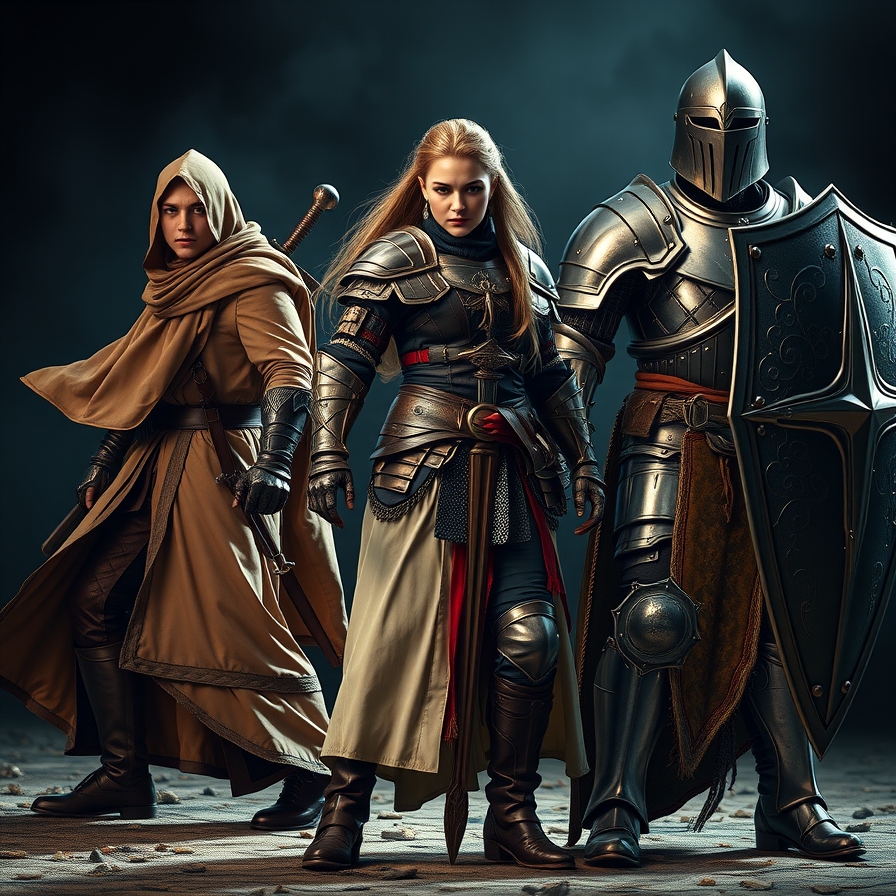
Armor provides two stats:
- Hit Modifier (H): affects chance to be hit.
- Damage Modifier (D): affects damage taken (soak).
Light Armor
Does not affect chance of getting hit, but offers low damage soak. Types: Cloth, Leather.
Medium Armor
Slightly increases chance of being hit and offers moderate damage soak. Types: Studded Leather, Chainmail.
Heavy Armor
Increases chance of being hit but offers high damage soak. Types: Plate mail.
| Armor Type | Helm | Chest | Gloves | Legs | Shield |
|---|---|---|---|---|---|
| Light D Mods | 0/+1 | 0/+1 | 0/+1 | 0/+1 | 0/+2 |
| Medium D Mods | -1/+2 | -1/+2 | -1/+2 | -1/+2 | -1/+3 |
| Heavy D Mods | -2/+3 | -2/+3 | -2/+3 | -2/+3 | -2/+4 |
Heavier armor makes character easier to hit, but harder to damage. Rare discoveries of magic armor have been rumored to offset these negative effects.
Magic
There are two types of magic known to exist in the world of The Krawl.
Arcane magic is the magic of the mages, and is based on the study of the arcane, the study of the universe and the laws of the universe.
Divine magic is the magic of the clerics, and is based on the study of the divine, the study of the gods and the laws of the gods.
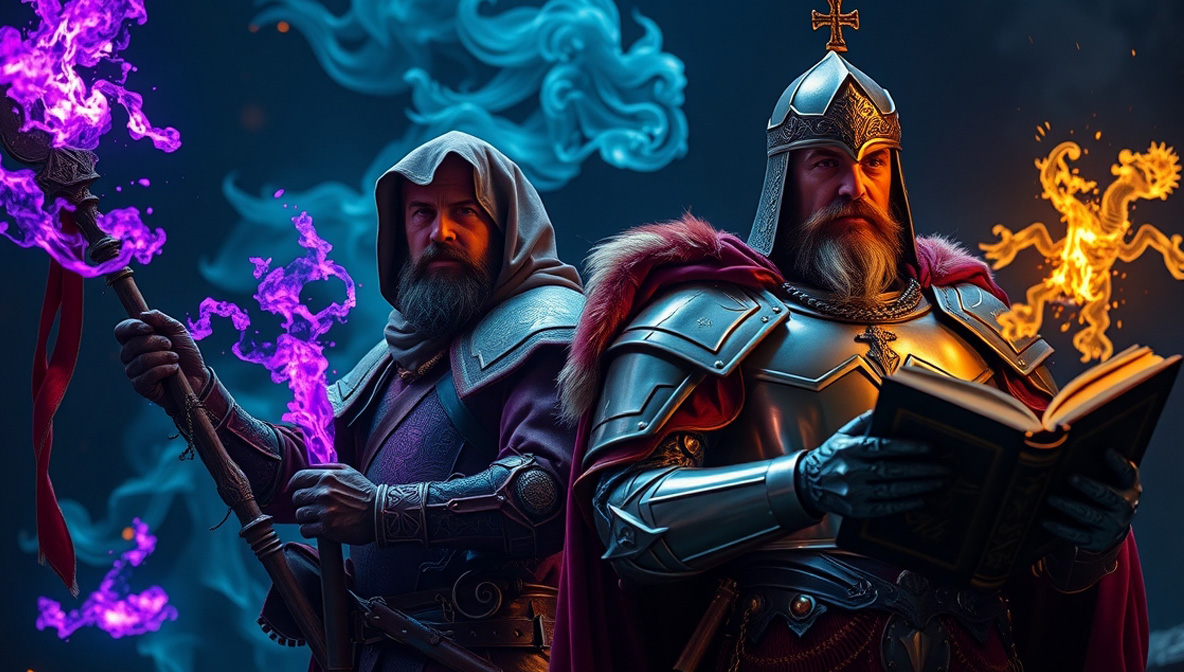
Spells Per Combat
Clerics and Mages: 1 spell per level (resets each combat).
Learning Spells
Mages and Clerics learn via scrolls or teachers, recorded in spellbooks/prayer lists.
Both Mage and Cleric spells may offer Offensive or Defensive H and D modifiers depending on the effect and power of the spell.
Casting Spells
- A Natural roll of 20 = auto-success (extraordinary success); a natural roll of 1 = auto-fail (disastrous mishap)
- Casting higher-level spells of your profession than your level requires a save vs. (10 + level difference) or the spell fizzles.
Scrolls & Cross-Casting
- Anyone may use a scroll once (consumes it). Save: INT (mage spell) or WIS (cleric spell) vs. 10 + spell level.
- Cross-class, e.g. a mage casting a cleric spell, must also save. Failure means the spell is lost and the scroll is destroyed.
Combat System
Combat is turn-based and resolved with a single d20 mechanic. Armor grants both (H)it avoidance and (D)amage Soak (mitigation). Heavy armor makes you easier to hit but reduces incoming damage. Light armor makes you harder to hit but leaves you vulnerable.
Combat Flow (Step-by-Step)
- Spot Trouble → Call Combat: DM declares combat begins.
- Place Combatants: DM determines if each NPC is a friend, foe or neutral.
- Initiative: Every combatant rolls a d20 + DEX (ties favor attacker), turn order is determined by the order of the highest rolls.
- Start of Turn: Apply ongoing effects.
- Choose Action: Attacker can move, attack, cast a spell, use an item, or any other action.
- Resolve Attacks/Actions:
- Melee Attack = d20 + STR + Weapon H + Level
- Ranged/Thrown Attack = d20 + DEX + Weapon H + Level
- Magic Attack = d20 + INT/WIS + Spell H + Level
- Calculate Required roll to hit = 10 + Defender's (H) modifiers - Attacker's (H) modifiers
- If roll ≥ roll required to hit, the attack hits. Nat 20 = auto-hit; Nat 1 = auto-miss.
- Actions resolve with skill checks, saving throws, or other rules.
- Apply Damage (on hit):
- Damage taken = Roll to Hit result - Roll required to hit + Attacker's (D) modifiers - Defender's (D) modifiers
- Minimum = 1 damage
- Critical Twists: Nat 20 → auto-hit + narrative twist (save Difficulty Level 15). Nat 1 → auto-miss + mishap (save Difficulty Level 15).
- Other Saves: For poisons, hazards, spells: d20 + mods + Level vs. Difficulty Level (5/10/15).
- End of Turn: Apply effects; pass to next combatant.
- New Round: Repeat initiative order.
- After Combat: Loot, conditions, recovery. Rest overnight = regain d20 + CON modifier HP. When a character reaches 0 HP they are dead.
Critical Twists
A natural 20 or natural 1 on a d20 triggers dramatic narrative shifts in combat, skill checks, or spell casting, enhancing the story with significant outcomes. Affected parties may attempt a save to resist or mitigate these effects.
Natural 20: Critical Twist
A natural 20 guarantees success (auto-hit for attacks, auto-success for skills/spells) and introduces a critical twist, such as ending combat, altering the environment, or shifting alliances. The affected party (usually the defender) makes a save: d20 + relevant ability modifier + Level vs. DC 15. Success negates or reduces the twist; failure triggers the full effect.
- Combat Example: "Your strike knocks the Orc captain toward the bridge railing, risking a plunge." (DEX save; failure ends combat via fall.)
- Skill Example: "Your persuasion sways the entire crowd to join you." (CHA save for leader; failure shifts their faction's loyalty.)
- Spell Example: "Your fireball ignites the room's tapestries, spreading chaos." (DEX save for foes; failure traps them in flames.)
Natural 1: Mishap
A natural 1 guarantees failure (auto-miss for attacks, auto-fail for skills/spells) and triggers a mishap, such as equipment failure, negative effects to the caster, or escalating threats. The attacker or acting character makes a save: d20 + relevant ability modifier + Level vs. Difficulty Level 15. Success avoids or mitigates the mishap; failure applies the full consequence.
- Combat Example: "Your wild swing risks snapping your sword." (STR save; failure breaks the weapon.)
- Skill Example: "Your failed lock-picking jams the mechanism." (DEX save; failure permanently locks the door.)
- Spell Example: "Your miscast spell backfires, sparking arcane feedback." (CON save; failure deals minor damage.)
DM Guidance: Choose the relevant ability for saves based on the twist/mishap (e.g., DEX for dodging, STR for resisting disarm, WIS for mental effects). Twists can end fights, create opportunities, or introduce new threats, but ensure lethal outcomes suit the narrative (e.g., reserve instant-death twists for minions or weakened foes).
Natural 20: Critical Twist
A natural 20 guarantees success (auto-hit for attacks, auto-success for skills/spells) and introduces a critical twist, such as ending combat, altering the environment, or shifting alliances. The affected party (usually the defender) makes a save: d20 + relevant ability modifier + Level vs. Difficulty Level 15. Success negates or reduces the twist; failure triggers the full effect.
- Combat Example: "Your strike knocks the Orc captain toward the bridge railing, risking a plunge." (DEX save; failure ends combat via fall.)
- Skill Example: "Your persuasion sways the entire crowd to join you." (CHA save for leader; failure shifts their faction’s loyalty.)
- Spell Example: "Your fireball ignites the room’s tapestries, spreading chaos." (DEX save for foes; failure traps them in flames.)
Natural 1: Mishap
A natural 1 guarantees failure (auto-miss for attacks, auto-fail for skills/spells) and triggers a mishap, such as equipment failure, self-harm, or escalating threats. The attacker or acting character makes a save: d20 + relevant ability modifier + Level vs. Difficulty Level 15. Success avoids or mitigates the mishap; failure applies the full consequence.
- Combat Example: "Your wild swing risks snapping your sword." (STR save; failure breaks the weapon.)
- Skill Example: "Your failed lock-picking jams the mechanism." (DEX save; failure permanently locks the door.)
- Spell Example: "Your miscast spell backfires, sparking arcane feedback." (CON save; failure deals minor damage.)
DM Guidance: Choose the relevant ability for saves based on the twist/mishap (e.g., DEX for dodging, STR for resisting disarm, WIS for mental effects). Twists can end fights, create opportunities, or introduce new threats, but ensure lethal outcomes suit the narrative (e.g., reserve instant-death twists for minions or weakened foes).
Death & Resurrection
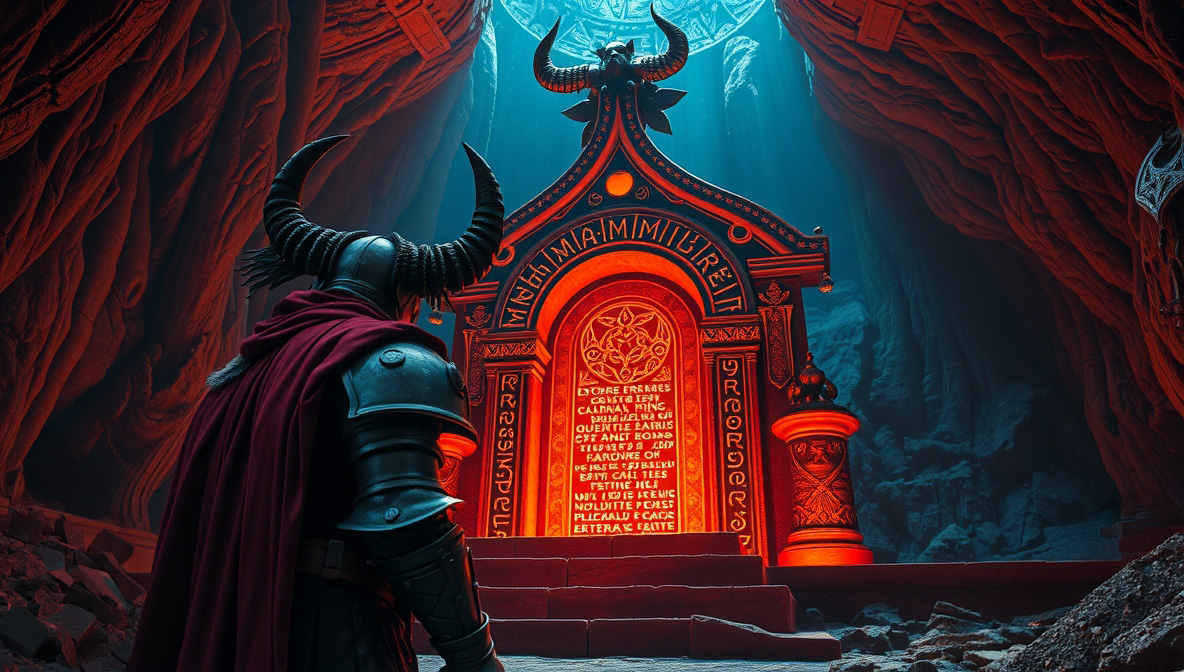
Death is not always the end—if you've bound yourself to a deity. Your actions determine what is lost or protected upon returning.
Death Threshold
0 HP = death. (See player resurrection below)
Altar Binding
- You may be bound to one Deity's Altar at a time. Upon binging your alignment changes to match the deity's alignment and the deity may choose to show you favor. You only unbind by dying.
- Alignment limits:
- Lawful → may bind to Lawful or Neutral.
- Neutral → may bind to Lawful, Neutral, or Chaotic.
- Chaotic → may bind to Chaotic or Neutral.
- Binding check: Roll a saving throw (DC set by deity's power).
- Natural 1 → catastrophic failure: gain an Affliction (DM-determined; may be permanent).
- Natural 20 → receive a Boon (DM-determined; may be permanent).
- Divine expectations: The DM may declare tasks owed to the deity after binding; failure risks the deity's wrath.
Resurrection
Player Resurrection
- On death...
- If bound to an Altar you will resurrect at your bound Altar.
- If not bound to an Altar your character will be permanently lost, however you will be reincarnated as a new character into a world that has been shaped by the life of your previous character.
- XP Loss (by default): lose 1 level's worth of XP (XP required for current level minus the previous level's requirement).
- Offerings (must be made before death):
- At your bound altar, you may offer Gold to your deity to reduce the XP loss on your next resurrection.
- 1 Gold = 1 XP protected from the loss.
NPC Resurrection
Players may choose to resurrect NPCs at any alter that aligns with the NPC's alignment, but at a significant cost. The player must offer an amount of gold equal to the NPC's experience points. This act of loyalty will fully restore the NPC without XP loss. After the donation is received, the NPC will return to the world with no penalty to their level. Deities can be fickle however, so the player must make a Normal difficulty savings throw to be successful. If the player rolls a natural 1, the NPC will be lost to the world forever. A natural 20 will restore the NPC with a permanent boon or other benefit (DM's discretion).
The Adventure Begins

In The Krawl the world unfurls before you as a boundless tapestry of possibility, where every choice you make weaves the threads of your destiny. From sprawling towns to majestic kingdoms, across vast oceans and into realms beyond imagination, you are the architect of your journey. Forge unbreakable bonds or topple mighty foes; serve with loyalty or command with authority. In this endless expanse, your path is yours alone to carve, limited only by the fire of your will.
And so the story begins...
Appendix – Full Weapon List
Appendix – Full Armor List
Class equipment rules: Fighter – Any; Cleric – Any; Thief – Light, Medium; Mage – Light. Equipping incompatible items imposes -1H/-1D × Level × # of incompatible items.
Armor Set Reference (Totals)
| Set (no shield) | Total H | Total D | Notes |
|---|---|---|---|
| Light (Head+Chest+Hands+Legs+Feet) | 0 | +5 | Max mobility/stealth; best for Mages/Thieves. |
| Medium (Head+Chest+Hands+Legs+Feet) | -5 | +10 | Balanced soak with modest hit penalty. |
| Heavy (Head+Chest+Hands+Legs+Feet) | -10 | +15 | Top soak; easiest to hit—pair with high D or control. |
| Shield Add-On | Extra H | Extra D | Typical Users |
|---|---|---|---|
| Buckler (Light) | 0 | +2 | Thieves, light-armor fighters/clerics. |
| Kite/Round (Medium) | -1 | +3 | Fighters, clerics; line combatants. |
| Tower (Heavy) | -2 | +4 | Shield-wall, defenders, sacred guardians. |